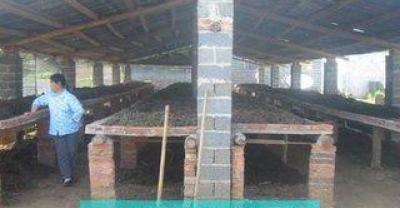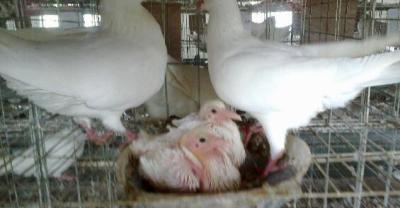How many methods are there for earthworm breeding? What should be paid attention to in daily management?
The food of artificially farmed earthworms can be plant residue fragments, humus, decaying animals and various waste materials as food, except glass, metal, rubber, plastic, bricks, stones, etc., such as pigeon, chicken, duck, goose, rabbit, pig, cow, sheep, horse, human feces. And withered branches, fallen leaves, weeds, stalks, husks, rice straw, pericarp, sawdust, waste paper, sawdust, all kinds of fat mud, waste paper pulp, scraps of food industry, and all kinds of domestic waste are good food for earthworms and can be digested and utilized by them. Therefore, in any fertile soil with a lot of humus, the number of earthworms is also more. Artificial breeding of earthworms is to use artificial methods to simulate its life requirements in the soil, artificially create good living and reproductive conditions for earthworms, and let them grow and reproduce in the artificial breeding environment.

The temperature of raising earthworms should be 20 ℃ ~ 25 ℃. The soil should be moist, the environment should be quiet and dark, and direct light should be avoided. There are many breeding methods, including pot culture, box basket culture, indoor brick pond culture, farmland culture, compost culture, groove culture, earthworm and snail mixed culture and so on.
Here are only a few applicable methods:
Containers such as washbasins, flowerpots and discarded pottery used for breeding in the ① basin can be used. Feed in the basin should not exceed 3 / 4 of the depth of the basin. For general flowerpots, 10-70 maggots can be raised in each pot; maggots in each washbasin can earn 40-150 maggots.
Due to the small area of the basin, the temperature and humidity in the basin are greatly affected by the external environment, and the soil and feed on the surface are easy to dry, so special attention should be paid to breeding, under the premise of ensuring ventilation, it is necessary to maintain the suitable temperature and humidity of the soil and feed in the basin as far as possible, cover Reed curtain, straw, plastic film, etc., and spray water frequently to maintain its sufficient humidity.
② box basket culture uses abandoned packing boxes, wicker baskets, bamboo strategies, etc., and can also process special earthworm breeding boxes. The aquaculture box is a K square unprofitable wooden box or plastic box, which is 20cm deep and 35cm deep and can be of any size to facilitate handling for it. Drainage and ventilation holes should be drilled at the bottom and side of the breeding tank, and the huge volume of the box hole should generally account for 20% and 35% of the box wall area. Handle handles are installed on both sides of the box to facilitate handling.
Box culture usually has to do multi-layer feeding bed, the breeding box stacked in the feeding bed divination, can make full use of the limited space and increase the burden of production. The multi-layer feeding bed can be welded with steel bar, angle iron or bamboo or wooden tower, which can be built with bricks, cement plates and other materials. Steam drop box on the feeding bed, generally put 4-5 floors is appropriate, too high is not easy to operate and divide. A passage for breeders is set aside between the two rows of bedstead. In addition, there should be temperature, hygrometer, sprayer, bamboo clip, tungsten lamp or halogen lamp, screen, toothed cake and other tools.
The aquaculture box is covered with about 15 centimeters of feed, with 4000 million earthworms per ten thousand meters. In order to prevent water evaporation, the box can be covered with Reed curtain, straw, plastic film and so on.
During the breeding period, the room should be regularly ventilated, keeping the temperature above 18 ℃ and the humidity of feed pile 70% to 80%. Pay attention to heat preservation in winter and spray cold water with sprayers to cool down in summer. With the gradual growth of earthworms, the density of mosquitoes and worms in the box should be reduced.
③ indoor brick pond culture in the indoor brick full 2-3 row square pool, the river pool accumulates 5-10 square meters, the depth of about 40 cm, each row reserved staff access. Spread the fermented feed in the pond 20-30 cm thick, put 4000-6000 earthworms per square meter, and small earthworms can be put into 20000. In order to prevent water evaporation, on the pool. It can be covered with Reed curtain, straw, plastic film, etc., or not, we should pay attention to the humidity of feed and spray water to humidify it in time.
During the breeding period, the room should be regularly ventilated, the temperature should be kept above 18 ℃, and the feed humidity should be 70% and 80%. Pay attention to heat preservation in winter and spray cold water with sprayers to cool down in summer.
Earthworm farming in ④ farmland combines indoor and outdoor. The effect is better. Earthworm farming was moved outdoors in spring, summer and autumn, and indoors in late autumn and early winter. Outdoors can benefit old gardens or farmland, in which an inter-row ditch with a width of 35 li 40 cm and a depth of 15 mi 20 cm is excavated, and then filled with livestock and poultry manure, domestic waste, etc., and then covered with soil and about 1000 earthworms per square meter. It is also possible to breed directly with natural earthworms without special stocking. The ditch is often kept wet, but no water can be accumulated. The cost of entering this method is low, but it is greatly affected by natural conditions and the output is low.
⑤ composting farming is a more economical and effective outdoor farming method:
Specific methods: take 50% of farm manure, 50% of soil, mix the two, or spread a layer of fertilizer. spread an estimated soil, each layer of 10 cm thick, layer by layer alternately laid into a pile; cut pile width of 1 to 2 meters, height of 50 cm, unlimited length, generally stacked 1 large, the manure heap can attract young female earthworms. Earthworms can also be put into the fertilizer pile for artificial culture. During the breeding period, water is sprayed very much on the manure pile. It is necessary to maintain the humidity of the fertilizer pile. You can't have too much water to make the fertilizer pile collapse.
The following points should be paid attention to in daily management:
① should be fed before feeding, and only after passing the test can be fed to earthworms, such as high ph value of manure, and a little vinegar can be added before feeding
When ② is added to the feed at the right time, it is found that the surface of the worm-raising material is smooth, and when the material is as fine as rice bran or earthworms, it should be added in time. In order to prevent the fermentation of the material from rising and causing the earthworm to die, the interval feeding method can be adopted: add 20cm width, do not add 10cm to 20cm width, and then add the remaining place when the poem earthworm begins to climb into the new material. If earthworms are found to escape at night, they can be controlled by lighting an electric lamp or sprinkling a circle of plant ash or lime powder around.
③ pay attention to watering and moisturizing. Once the surface of the material is found to be dry, it should be watered in time (with 1Ru 30O EM solution) to maintain 70% to 80% humidity. The humidity can be slightly reduced in winter.
When the cocoon temperature was above 25 ℃, ④ separated the egg cocoons from earthworms once in 15 days, and the separation time was gradually prolonged with the decrease of air temperature. Each separated cocoon is stacked separately for hatching and feeding. At the same time, we should do a good job in the purification and rejuvenation of seed worms to maintain stable and high yield. If the hatched worms grow 40 to 50 feet, they can be taken out and fed to Monopterus Albus by "light separation".
Light separation method, that is, an eye-sized sieve that can be drilled by earthworms is placed on a plastic basin, and the dung is first wet with water and then poured into the sieve, with a thickness of no more than 2 cm. Put it in the sun, because the earthworm will be afraid of light, will desperately drill down and fall into the basin below.
(photo data source network, reprint prohibited)
- Prev

The language of tulip flowers is so diverse, but the method of breeding is so simple.
Tulip is a flower that many people like, because it has a noble temperament, it is commonly used in many wedding or banquet places. Tulips are also called.
- Next

Application of traditional Chinese Medicine in Poultry breeding in Summer
Summer belongs to fiery inflammation according to the theory of traditional Chinese medicine, which is easy to damage yin and consume qi. In summer, due to high temperature and little rain in the north, it is easy to have summer fever. However.
Related
- On the eggshell is a badge full of pride. British Poultry Egg Market and Consumer observation
- British study: 72% of Britons are willing to buy native eggs raised by insects
- Guidelines for friendly egg production revised the increase of space in chicken sheds can not be forced to change feathers and lay eggs.
- Risk of delay in customs clearance Australia suspends lobster exports to China
- Pig semen-the Vector of virus Transmission (4)
- Pig semen-the Vector of virus Transmission (3)
- Five common causes of difficult control of classical swine fever in clinic and their countermeasures
- Foot-and-mouth disease is the most effective way to prevent it!
- PED is the number one killer of piglets and has to be guarded against in autumn and winter.
- What is "yellow fat pig"? Have you ever heard the pig collector talk about "yellow fat pig"?

